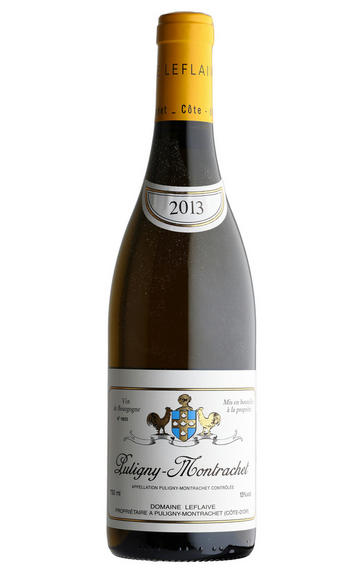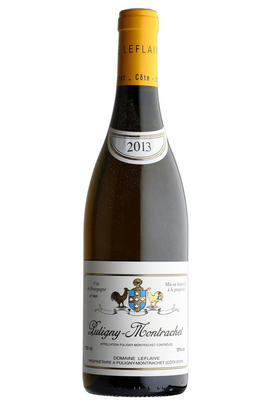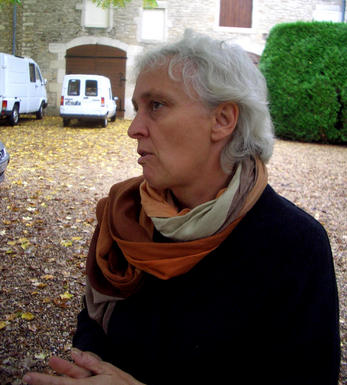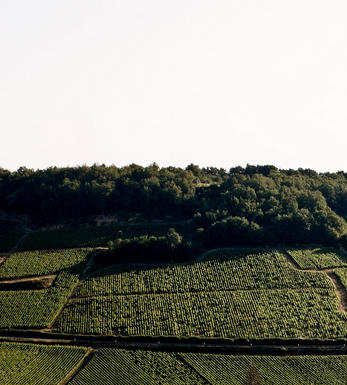
2013 Puligny-Montrachet, Domaine Leflaive, Burgundy

Critics reviews
Neal Martin - 30/12/2014
About this WINE

Domaine Leflaive
Domaine Leflaive is the most famous estate in Puligny-Montrachet. After the untimely death of Anne-Claude Leflaive in April 2015, the estate is now being managed by Brice de la Morandiere with the winemaking under the control of Eric Remy (in succession to Pierre Morey who retired in 2008).
Leflaives have been extant in Puligny since 1717 but the real founder of the domaine was Joseph (1870-1953) who was succeeded by two of his sons, Vincent and Jo. However it was under the stewardship of Anne-Claude between 1990 and 2015 that the domaine became a leader in Burgundy’s biodynamic movement, the whole property being converted in 1997.
The wines are aged for 12 months in 25% new oak and are then transferred to steel tanks where they are allowed to clarify naturally over the second winter. They are then fined and bottled. Leflaive produces superb wines that combine richness and depth of fruit with elegance, refinement and perfect balance.
Leflaive has 22 hectares of vineyards, including 10 hectares of Premiers Crus (in Puligny Montrachet: Les Combettes, Les Pucelles, Le Clavoillon, Les Folatieres and in Meursault-Blagny, Sous le Dos d'Ane) and no fewer than 5 hectares of Grands Crus (Chevalier Montrachet, Bâtard Montrachet, Bienvenues Bâtard Montrachet and a tiny holding of Le Montrachet).
Jasper Morris MW, Burgundy Wine Director and author of the award-winning Inside Burgundy comprehensive handbook.

Puligny-Montrachet
Puligny was one of two villages (along with Chassagne) which gained permission in 1879 to hyphenate the name of its most famous vineyard, Montrachet, to its own.
The reputation of Puligny-Montrachet is based around its four Grands Crus. Montrachet labels often boast a noble, triumphant 'Le' in front of its name, lest you dare confuse it with any lesser wine. It has much to be proud of, with many considering Montrachet to be the greatest white wine in the world. At its best it has an intensity, complexity and elegance that make you wonder how such a wine could be made from mere grapes.
The luxurious and explosive Chevalier-Montrachet is not quite as deep, although it is probably the next best. Only marginally less impressive, and rather more consistent than Montrachet is the richly textured Bâtard-Montrachet (also shared with Chassagne). Bienvenues-Bâtard-Montrachet is equally good, with the focus on honeyed finesse and exquisite balance rather than richness.
These legendary wines are supported by a host of fabulous Premier Cru vineyards capable of reaching Grand Cru quality. Brimming with flavour and intensity, Le Cailleret and Les Pucelles (which both lie across the road from Le Montrachet) are prime candidates, along with Les Demoiselles, Les Combettes and Folatières.
Sandwiched between the larger Chassagne and Meursault, Puligny produces wines that are more striking than any in the Côte d’Or, portraying a floral elegance alongside a stylish, steely concentration. They are very different to Meursault: more refined and delicate, and less rich.
Village level Puligny-Montrachet from top growers can be very good indeed, but is all too often unexciting and disappointing. Grands Crus normally need at least eight years before they can be broached, and last for 20 or more. Premiers Crus should generally be enjoyed between five and 15 years of age; village wines from three to 10 years.
In theory, you can find red Puligny-Montrachet, but it scarcely exists anymore, and is rarely worth the price tag.

Chardonnay
Chardonnay is often seen as the king of white wine grapes and one of the most widely planted in the world It is suited to a wide variety of soils, though it excels in soils with a high limestone content as found in Champagne, Chablis, and the Côte D`Or.
Burgundy is Chardonnay's spiritual home and the best White Burgundies are dry, rich, honeyed wines with marvellous poise, elegance and balance. They are unquestionably the finest dry white wines in the world. Chardonnay plays a crucial role in the Champagne blend, providing structure and finesse, and is the sole grape in Blanc de Blancs.
It is quantitatively important in California and Australia, is widely planted in Chile and South Africa, and is the second most widely planted grape in New Zealand. In warm climates Chardonnay has a tendency to develop very high sugar levels during the final stages of ripening and this can occur at the expense of acidity. Late picking is a common problem and can result in blowsy and flabby wines that lack structure and definition.
Recently in the New World, we have seen a move towards more elegant, better- balanced and less oak-driven Chardonnays, and this is to be welcomed.


Buying options
Add to wishlist
Description
Bright pale greenish gold. A little subdued on the nose. Solid and with lovely build. Masses of citrus freshness and tightly curled. Solid and stony. Very promising.
Jancis Robinson MW - jancisrobinson.com - Nov 2014
wine at a glance
Delivery and quality guarantee